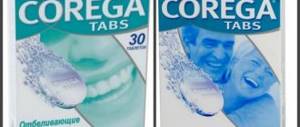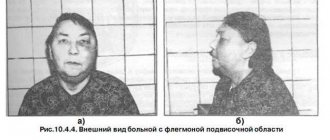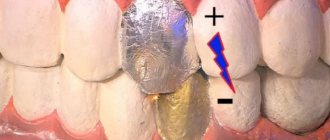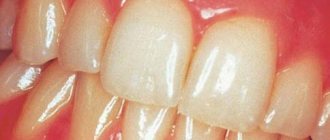Painkillers are used to eliminate pain; the best of them are those that act quickly and are safe for the body. Such medications can confidently include Ketorol, a medicine used to relieve pain of various origins.
Composition and mechanism of action of Ketorol
Ketorol is available in three dosage forms - tablets, injection solution and gel. Regardless of the release form, the main active ingredient is ketorolac tromethamine.
The drug belongs to non-steroidal anti-inflammatory non-narcotic drugs. Under the influence of ketorolac, the secretion of cyclooxygenase, the enzyme responsible for the production of prostaglandins, is reduced in peripheral tissues. These are physiologically active substances that regulate pain, inflammation and temperature. By blocking the enzymatic activity of cyclooxygenase, Ketorol accordingly reduces the production of prostaglandins, which leads to the following effects:
- inflammation decreases;
- temperature normalizes;
- painful sensations are relieved.
It is the analgesic effect that is most pronounced when using Ketorol, so this drug is often prescribed for both moderate and severe pain. The medicine, unlike Diclofenac and a number of other NSAIDs, does not lead to erosions on the mucous membranes of the stomach if a short course of treatment is followed.
Ketorol only helps relieve pain; the medicine does not affect the cause of its occurrence.
In case of severe and constant pain, it is necessary to establish the root cause of the pathology and undergo an appropriate course of therapy.
Indications for use
Ketorol is intended only for the elimination of acute painful sensations. The tablet form of the drug and injections are used to eliminate the following types of pain:
- Head;
- Dental;
- Menstrual;
- Musculo-articular;
- Bone.
Ketorol in injections for pain is often used after injuries, for the treatment of osteochondrosis, radiculitis in the acute stage of illness. The drug may be included in the treatment regimen for cancer patients. Very often, ampoule Ketorol is used in combination with Analgin and Diphenhydramine to eliminate pain in malignant diseases. Moreover, the last two medications must be taken separately, that is, Ketorol is drawn into one syringe, and Diphenhydramine with Analgin into another.
Without a doctor's prescription, you cannot use several drugs with an analgesic effect at the same time, as this greatly increases the development of adverse reactions.
The choice of dosage form of the drug depends on the severity of the pain syndrome, the root cause of its development, and the presence of concomitant pathologies.
Indications for use of the drug Ketorol
Elimination of severe and moderate acute pain of various origins and localization:
- early postoperative period, pain relief after gynecological, orthopedic, laparoscopic manipulations, after injuries, burns;
- elimination of attacks of renal colic, hepatic colic, bone pain in sickle cell anemia;
- toothache;
- acute neuralgia, neuritis, radicular pain, pain with herpes zoster;
- elimination of migraine attacks.
Contraindications to the drug
Ketorol, in comparison with many painkillers, has a much stronger effect, but this drug has a fairly large list of contraindications. Before using tablets and medicines in ampoules, you must make sure that the patient does not have:
WE RECOMMEND THE ARTICLE!
Voltaren ointment is effective for back pain. Read more >>
- Bronchospasm. Ketorol is not prescribed even if bronchospasm has occurred in the past.
- Exacerbations of diseases occurring with erosive and ulcerative lesions of the gastrointestinal mucosa. This applies to erosive gastritis, gastric ulcer.
- Bronchial aspirin asthma.
- Blood clotting disorders. Ketorol somewhat thins the blood, so the drug is not safe to use for hemophilia.
- Hemorrhagic stroke.
- Risk of extensive bleeding. Ketorol should not be used after extensive abdominal surgery.
- Pregnancy. Medicines are also not used for pain relief during childbirth and breastfeeding.
- Hypersensitivity to other medications related to NSAIDs.
Ketorol can only be used after reaching 16 years of age. It is contraindicated to take alcohol during treatment, as this greatly increases the irritating effect of ketorolac on the mucous membranes of the digestive tract.
Possible adverse reactions
In most cases, side effects are expressed:
- urination disorders - increased frequency or delay;
- headache;
- drowsiness;
- flatulence;
- diarrhea or constipation;
- hypotension.
Less commonly, patients experience stomach cramps, back pain, swelling, dizziness, bronchospasm, rhinitis, and nosebleeds while using Ketorol.
If you are hypersensitive to the active ingredient, loss of consciousness, swelling of the throat, and convulsions are possible.
In case of pronounced adverse reactions, the use of Ketorol should be stopped and the change in health should be reported to your doctor.
Special instructions for the use of the drug Ketorol
Since adverse reactions from the central nervous system (drowsiness, dizziness, headache) develop during the use of Ketorol, it is recommended to avoid performing work that requires increased attention and quick reaction. Prescribing Ketorol during pregnancy is possible only if the expected benefit to the mother outweighs the potential risk to the fetus and only as prescribed by a doctor. If it is necessary to prescribe Ketorol during breastfeeding, the issue of stopping breastfeeding should be decided.
Features of using Ketorol
The use of tablet and injection forms of the drug without a doctor’s prescription should not last more than 5 days. Patients over 65 years of age and with impaired renal function should use the medicine in the lowest possible dosage, since in these categories of patients the risk of developing side effects is significantly higher. How often Ketorol injections can be given is decided only by the doctor, depending on the nature of the disease.
Pills
A single dose is one tablet, which is 10 mg of ketorolac tromethamine. The analgesic effect lasts for 4-6 hours. You can take no more than 4 tablets per day. The tablets are swallowed without chewing.
Injection administration of the drug
Ketorol injections are given intramuscularly. A single dose of the drug is 10-30 mg, which is 0.3 - 1 ml of the product in ampoules. Injections can be repeated every 4-6 hours, but the total daily dosage should not exceed 90 mg (3 ampoules).
[media=
https://youtu.be/QkmUB3DSkVU
]
Ketorol Express, 10 mg, tablets, dispersible in the oral cavity, 20 pcs.
The simultaneous use of ketorolac with acetylsalicylic acid or other NSAIDs, calcium preparations, glucocorticosteroids, ethanol, corticotropin can lead to a significant increase in the risk of adverse reactions, including the formation of gastrointestinal ulcers and the development of gastrointestinal bleeding.
When ketorolac is used simultaneously with other NSAIDs (including COX-2 inhibitors), fluid retention, cardiac decompensation, and increased blood pressure may occur.
The simultaneous use of ketorolac with indirect anticoagulants, thrombolytics, antiplatelet agents, cefoperazone, cefotetan and pentoxifylline increases the risk of bleeding.
Probenecid reduces the plasma clearance and volume of distribution of ketorolac, increases its concentration in the blood plasma and increases its T1/2.
The combined use of ketorolac with valproate causes disruption of platelet aggregation.
When using ketorolac with other nephrotoxic drugs (including gold preparations), the risk of developing nephrotoxicity increases.
Combined use with paracetamol increases the nephrotoxicity of ketorolac.
Drugs that block tubular secretion reduce the clearance of ketorolac and increase its concentration in the blood plasma.
The combined use of ketorolac with methotrexate increases the hepato- and nephrotoxicity of methotrexate. The combined use of ketorolac and methotrexate is possible only when using low doses of the latter. The clearance of methotrexate may decrease (it is necessary to monitor the concentration of methotrexate in the blood plasma).
With the use of ketorolac, it is possible to reduce the clearance of lithium, increase its concentration in the blood plasma and increase the toxic effect of lithium. Simultaneous use with lithium salts is contraindicated.
Ketorolac reduces the effect of antihypertensive and diuretic drugs (the synthesis of prostaglandins in the kidneys is reduced).
Ketorolac enhances the effect of narcotic analgesics. When combined with opioid analgesics, the doses of the latter can be significantly reduced.
Ketorolac enhances the hypoglycemic effect of insulin and oral hypoglycemic drugs, and therefore it is necessary to recalculate the dose of these drugs.
Ketorolac increases the plasma concentrations of verapamil and nifedipine.
Concomitant use of NSAIDs and mifepristone may reduce the effectiveness of mifepristone. NSAIDs are not recommended for use within 8-12 days after using mifepristone.
Concomitant use of NSAIDs and cyclosporine increases the risk of nephrotoxicity.
The simultaneous use of NSAIDs and quinolone antibiotics increases the risk of developing seizures.
Concomitant use of NSAIDs and tacrolimus increases the risk of nephrotoxicity.
Concomitant use of NSAIDs and zidovudine increases the risk of hematological toxicity.
When used simultaneously with digoxin, ketorolac does not interfere with the binding of digoxin to plasma proteins. Therapeutic concentrations of digoxin do not affect the binding of ketorolac to plasma proteins.
Antacids do not affect the absorption of ketorolac.
Myelotoxic drugs increase the manifestations of hematotoxicity of ketorolac.
Ketorol - analogues
Ketorol cannot always be used to relieve pain. If the medicine is not suitable due to contraindications or the price does not suit you, then other painkillers can be used.
| Drug name | Compound | Mechanism of action | Release form | average cost |
| Ketanov | Ketorolac trometamol | Analgesic, anti-inflammatory | Solution for injection, tablets | Tablets - 70 rubles; Ampoules - 150 rubles. |
| Ketonal | Ketoprofen | Anti-inflammatory, analgesic. Compared to ketorol, it is eliminated from the body faster, therefore it is safer for relieving pain in elderly patients | Tablets, capsules, injection solution, gel. | Capsules - 150 rubles, ampoule solution - 250 rubles |
| Nise | Nimesulide | Antipyretic, analgesic, anti-inflammatory | Tablets, gel | Tablets - 160 rubles |
| Tempalgin | Metamizole sodium and triacetonamine | Analgesic, moderate anti-inflammatory and sedative | Pills | 80 rubles |
The cost of the tablet form of Ketorol is on average about 40 rubles. The original drug and any of its analogues should be used taking into account all contraindications to taking the medicine.
Pharmacological properties of the drug Ketorol
Ketorolac is an NSAID with pronounced analgesic, antipyretic and anti-inflammatory effects. The mechanism of action is associated with blockade of the COX enzyme in peripheral tissues, resulting in inhibition of the biosynthesis of prostaglandins - modulators of pain sensitivity, thermoregulation and inflammation. Ketorolac is a racemic mixture of [-]S and [+]R-enantiomers, with the analgesic effect due to the [-]S-form. Ketorolac does not affect opioid receptors and respiratory function, does not have a sedative or anxiolytic effect, and does not cause drug dependence. Ketorolac also inhibits platelet aggregation. The ability of platelets to aggregate is restored after 24–48 hours. The drug does not cause withdrawal syndrome after stopping its use. After oral administration, Ketorolac is rapidly absorbed and completely absorbed from the gastrointestinal tract. The maximum concentration in blood plasma is reached on average 44 minutes after taking 10 mg and is 0.7–1.1 mcg/ml. In patients over 65 years of age, the half-life of ketorolac end-products increases to 7 hours (4.3–8.6 hours) compared to young healthy volunteers. Total plasma clearance decreases to 0.019 l/kg. The pharmacokinetics of ketorolac after single and repeated use does not change and is linear. Equilibrium concentrations of the drug in the blood plasma are achieved when the drug is administered every 6 hours throughout the day. The clearance of the drug with repeated use remains constant. Ketorolac is 99% bound to plasma proteins, the degree of binding does not depend on the concentration of the drug in the blood. Metabolites of ketorolac are excreted from the body by the kidneys, 94% of the administered dose is excreted in the urine, 6% is excreted in the feces. In patients with impaired renal function, the elimination of ketorolac is slowed down, which is manifested by a prolonged half-life and decreased clearance compared to young healthy individuals. In patients with impaired liver function, no changes in the pharmacokinetics of ketorolac were noted, but the time to reach the maximum concentration of the drug in the blood plasma and the half-life are slightly increased compared to young healthy volunteers.










